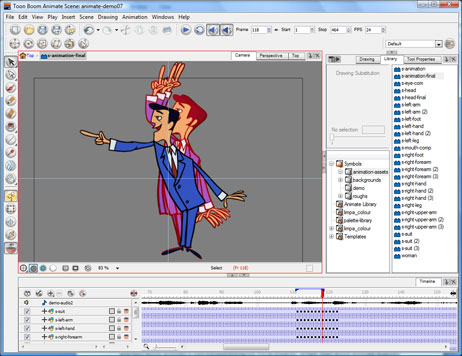

The Duke’s Game – Mouse and Nitro face off. The animate pencil texture effect node allows artists to quickly add line boil to textured vector lines, and the new bokeh blur effect allows independent artists, as well as compositing teams of all sizes, to bring cinematic effects to their projects. Python scripts can now run from Harmony’s own Python Console to access and manipulate scene data, which provide technical directors with more flexibility when developing workflows tailored to their production’s needs. Rendering operations are now performed using 32-bit floating point values, which not only enable native support for HDR color and brightness values but also improve precision and performance on heavy scenes. Harmony 22 Premium introduces new features for artists and studios alike, including full support for HDR pipelines, improved support for Python scripting, as well as new effects for animators and compositing artists. Industry artists recognize that Harmony’s industry-leading drawing engine and workflow tools provide the flexibility to produce animation in any style with organic bitmap brushes, precise vector lines, a robust color management system, an easy-to-use 3D stage and multiplane camera system, as well as tools for both traditional animation and rigged characters - while always offering artists the freedom to seamlessly draw special poses when needed for a scene. A benefit of using a consistent set of tools throughout the production process is that revisions can be made at any point, without needing to import and export scenes or compromise in quality along the way.

Industry artists rely on Harmony Premium’s tools and workflows at every step of the production process, from roughs to ink-and-paint as well as 2D rigged characters and compositing. The Duke’s Game Harmony 22: Creating Worlds of 2D Animation Just in time for the busy fall season, Montreal-based software powerhouse Toon Boom has released the 22 version of its standard-setting Harmony and Storyboard Pro tools which promise to expand the possibilities of visual storytelling while giving artists more control and freedom of ease. ***This article originally appeared in the November ’22 issue of Animation Magazine (No.


 0 kommentar(er)
0 kommentar(er)
